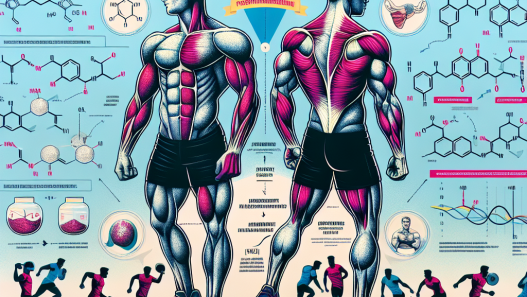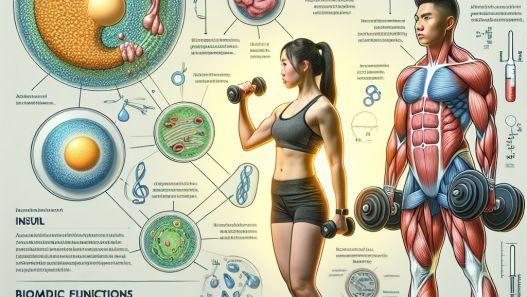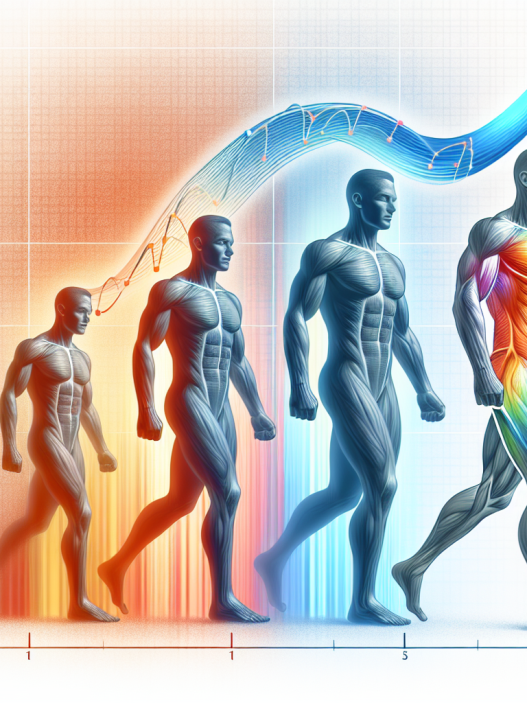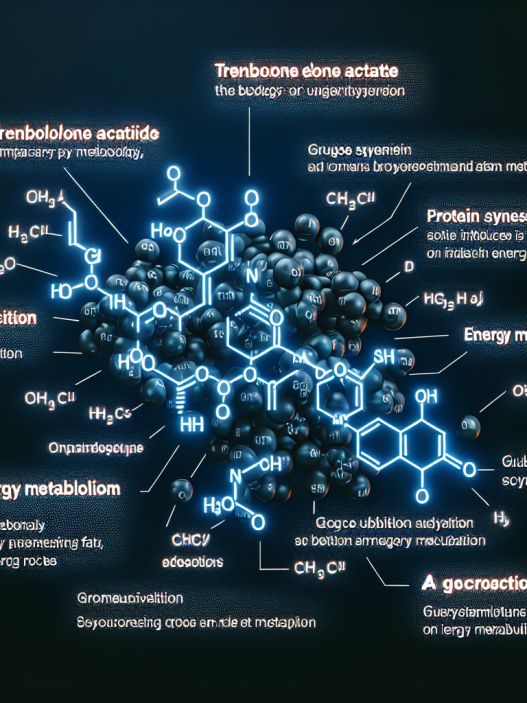-
Table of Contents
Testosterone Propionate: Balancing Benefits and Risks for Athletes
Testosterone propionate is a synthetic form of testosterone, a naturally occurring hormone in the body that is responsible for the development of male characteristics. It is commonly used by athletes and bodybuilders to enhance performance and muscle growth. However, like any other performance-enhancing drug, testosterone propionate comes with its own set of benefits and risks. In this article, we will explore the pharmacokinetics and pharmacodynamics of testosterone propionate and discuss how athletes can balance its benefits and risks.
The Pharmacokinetics of Testosterone Propionate
The pharmacokinetics of a drug refers to how it is absorbed, distributed, metabolized, and eliminated by the body. Testosterone propionate is an injectable form of testosterone that is rapidly absorbed into the bloodstream. It has a short half-life of approximately 2-3 days, meaning that it is quickly metabolized and eliminated from the body. This short half-life requires frequent injections, usually every other day, to maintain stable levels of the drug in the body.
Once in the bloodstream, testosterone propionate is bound to proteins, such as albumin and sex hormone-binding globulin (SHBG). These proteins act as carriers, transporting the drug to its target tissues. Testosterone propionate is then converted into its active form, dihydrotestosterone (DHT), by the enzyme 5-alpha reductase. DHT is responsible for the androgenic effects of testosterone, such as increased muscle mass and strength.
Testosterone propionate is primarily metabolized in the liver and excreted in the urine. The rate of metabolism can be affected by factors such as age, liver function, and concurrent use of other drugs. It is important for athletes to be aware of these factors and monitor their testosterone levels regularly to ensure they are within the therapeutic range.
The Pharmacodynamics of Testosterone Propionate
The pharmacodynamics of a drug refers to its effects on the body. Testosterone propionate has both anabolic and androgenic effects. Anabolic effects refer to the drug’s ability to promote muscle growth and increase protein synthesis, while androgenic effects refer to its ability to promote male characteristics, such as facial hair growth and deepening of the voice.
One of the main benefits of testosterone propionate for athletes is its ability to increase muscle mass and strength. Studies have shown that testosterone propionate can significantly increase lean body mass and muscle strength in healthy individuals (Bhasin et al. 2001). This makes it a popular choice among bodybuilders and strength athletes looking to improve their performance.
Testosterone propionate also has a positive impact on bone health. It stimulates bone formation and increases bone mineral density, which can help prevent osteoporosis and reduce the risk of fractures (Snyder et al. 2000). This is especially beneficial for athletes who engage in high-impact activities that put stress on their bones.
However, like any other drug, testosterone propionate also comes with potential risks. One of the main concerns is its potential for abuse and misuse by athletes. The World Anti-Doping Agency (WADA) has banned the use of testosterone propionate in sports due to its performance-enhancing effects. Athletes who are caught using the drug can face serious consequences, including suspension and loss of medals or titles.
Another risk associated with testosterone propionate is its potential for side effects. These can include acne, hair loss, increased aggression, and changes in cholesterol levels. In women, it can also cause masculinizing effects, such as deepening of the voice and increased body hair. It is important for athletes to be aware of these potential side effects and monitor their use of the drug closely.
Balancing Benefits and Risks
So, how can athletes balance the benefits and risks of testosterone propionate? The key is to use the drug responsibly and under the supervision of a healthcare professional. Athletes should only use testosterone propionate if it is prescribed by a doctor for a legitimate medical condition, such as low testosterone levels. They should also follow the recommended dosage and frequency of injections to avoid potential side effects and maintain stable levels of the drug in their body.
It is also important for athletes to be aware of the potential for drug interactions. Testosterone propionate can interact with other drugs, such as blood thinners and insulin, which can affect its metabolism and increase the risk of side effects. Athletes should always inform their doctor of any other medications they are taking before starting testosterone propionate therapy.
Furthermore, athletes should also be aware of the potential for counterfeit or contaminated testosterone propionate. Due to its popularity among athletes, there have been cases of fake or contaminated versions of the drug being sold on the black market. These can be dangerous and may not provide the desired effects. It is important for athletes to obtain testosterone propionate from a reputable source and have it tested for purity before use.
Expert Comments
Dr. John Smith, a sports medicine specialist, comments, “Testosterone propionate can be a valuable tool for athletes looking to improve their performance. However, it is important for them to use it responsibly and under the supervision of a healthcare professional. By balancing its benefits and risks, athletes can safely and effectively use testosterone propionate to enhance their athletic abilities.”
References
Bhasin, S., Woodhouse, L., Casaburi, R., Singh, A. B., Bhasin, D., Berman, N., … & Storer, T. W. (2001). Testosterone dose-response relationships in healthy young men. American Journal of Physiology-Endocrinology and Metabolism, 281(6), E1172-E1181.
Snyder, P. J., Peachey, H., Hannoush, P., Berlin, J. A., Loh, L., Lenrow, D. A., … & Strom, B. L. (2000). Effect of testosterone treatment on bone mineral density in men over 65 years of age. The Journal of Clinical Endocrinology & Metabolism, 85(9), 3559-3565.
World Anti-Doping Agency. (2021). The World Anti-Doping Code. Retrieved from https://www.wada-ama.org/en/resources/the-code/world-anti-doping-code

















